-
 bitcoin
bitcoin $99296.318777 USD
-2.82% -
 ethereum
ethereum $3203.465899 USD
-6.84% -
 tether
tether $0.999590 USD
-0.03% -
 xrp
xrp $2.308913 USD
-4.00% -
 bnb
bnb $922.788929 USD
-3.53% -
 solana
solana $144.020807 USD
-5.89% -
 usd-coin
usd-coin $0.999798 USD
0.00% -
 tron
tron $0.291590 USD
-1.12% -
 dogecoin
dogecoin $0.163780 USD
-4.46% -
 cardano
cardano $0.526919 USD
-4.40% -
 hyperliquid
hyperliquid $37.888865 USD
-2.24% -
 bitcoin-cash
bitcoin-cash $510.515457 USD
-1.08% -
 chainlink
chainlink $14.436987 USD
-5.63% -
 stellar
stellar $0.267345 USD
-4.77% -
 unus-sed-leo
unus-sed-leo $9.175222 USD
0.53%
Is VWAP useful for option volatility trading? How to judge the reasonable range?
VWAP aids option volatility traders by providing a benchmark to assess if current option prices are favorable, helping decide entry and exit points.
May 23, 2025 at 01:57 pm
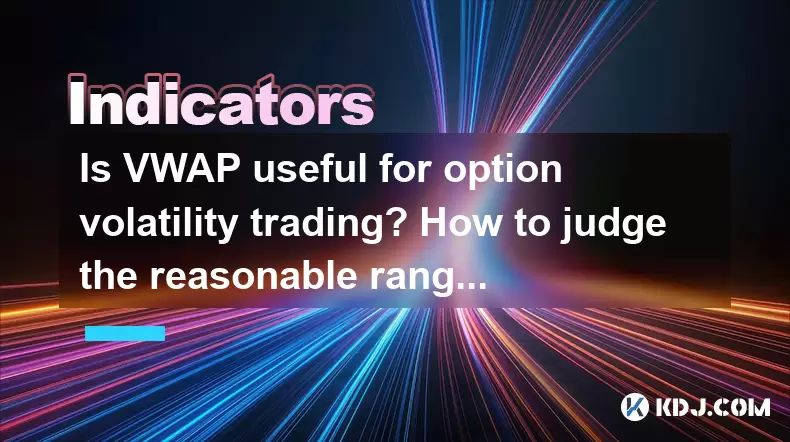
Introduction to VWAP and Its Role in Trading
Volume Weighted Average Price (VWAP) is a trading benchmark used by investors to gauge the average price a security has traded at throughout the day, based on both volume and price. It is commonly used by traders to assess the market's direction and to make informed decisions about entry and exit points. While VWAP is typically associated with stock trading, its principles can be applied to other financial instruments, including options.
In the context of option volatility trading, VWAP can serve as a valuable tool for traders looking to understand the market's behavior and make strategic decisions. Volatility trading involves trading options based on the expected volatility of the underlying asset, rather than its price direction. By using VWAP, traders can gain insights into the average price at which options have been traded, helping them to assess whether current prices are favorable.
Understanding Option Volatility
Option volatility refers to the degree of variation in the price of an option over time. It is a critical factor in options pricing and trading strategies. There are two main types of volatility: historical volatility, which measures past price movements, and implied volatility, which reflects the market's expectation of future volatility.
In volatility trading, traders aim to profit from changes in implied volatility. They may buy options when they believe volatility will increase and sell options when they anticipate a decrease in volatility. VWAP can assist in this process by providing a benchmark against which traders can compare current option prices.
How VWAP Can Be Applied to Option Volatility Trading
To apply VWAP to option volatility trading, traders need to calculate the VWAP of the option they are interested in. This involves the following steps:
- Collect Data: Gather the price and volume data for the option over a specific period, typically a trading day.
- Calculate VWAP: Use the formula VWAP = (Σ (Price * Volume)) / Σ Volume, where Σ represents the sum of the values over the period.
- Compare to Current Price: Once the VWAP is calculated, compare it to the current market price of the option to determine if the option is trading at a premium or discount.
By understanding whether an option is trading above or below its VWAP, traders can make more informed decisions about whether to buy or sell the option based on its perceived value.
Judging the Reasonable Range of Option Prices
Determining the reasonable range of option prices involves assessing various factors, including the underlying asset's price, time to expiration, and expected volatility. VWAP can play a role in this assessment by providing a baseline for comparison.
- Assess Historical Data: Look at historical price data for the option to understand its typical trading range.
- Consider Market Conditions: Take into account current market conditions, such as economic news or events that could impact the underlying asset's volatility.
- Evaluate Implied Volatility: Compare the option's implied volatility to its historical volatility to gauge whether the market's expectations are reasonable.
- Use VWAP as a Benchmark: Compare the current option price to its VWAP to determine if it is trading within a reasonable range.
By combining these factors, traders can develop a more comprehensive understanding of whether an option's price is reasonable and make better-informed trading decisions.
Practical Application of VWAP in Option Volatility Trading
To illustrate how VWAP can be used in option volatility trading, consider a scenario where a trader is interested in purchasing a call option on a stock. The trader calculates the VWAP for the option over the past trading day and finds that the current market price is significantly higher than the VWAP.
- Interpretation: This suggests that the option may be overvalued relative to its average trading price.
- Decision Making: The trader might decide to wait for the price to fall closer to the VWAP before entering the trade, or they might choose to look for other options with more favorable pricing.
Conversely, if the current market price is below the VWAP, the trader might interpret this as an opportunity to buy the option at a discount, anticipating that the price will revert to the mean.
Limitations and Considerations
While VWAP can be a useful tool in option volatility trading, it is important to be aware of its limitations. VWAP is a lagging indicator, meaning it reflects past trading activity and may not accurately predict future price movements. Additionally, VWAP is sensitive to large trades, which can skew the average price.
Traders should also consider other factors, such as market sentiment, economic indicators, and technical analysis, when making trading decisions. VWAP should be used as part of a broader trading strategy, rather than as the sole basis for making trades.
Frequently Asked Questions
Q1: Can VWAP be used for intraday trading of options?Yes, VWAP can be particularly useful for intraday trading of options. Since VWAP is calculated based on the trading activity throughout the day, it can provide real-time insights into the average price at which options are being traded. Traders can use this information to make quick decisions about buying or selling options during the trading day.
Q2: How does VWAP differ from other trading indicators like moving averages?VWAP differs from moving averages primarily in its consideration of trading volume. While a moving average simply calculates the average price over a given period, VWAP weights the price by the volume traded at each price level. This makes VWAP more reflective of the market's actual trading activity and can provide a more accurate picture of the average price at which a security or option is being traded.
Q3: Is VWAP more effective for certain types of options, such as index options or individual stock options?VWAP can be effective for both index options and individual stock options, but its effectiveness may vary depending on the liquidity and trading volume of the specific option. Index options, which are typically more liquid and have higher trading volumes, may provide more reliable VWAP calculations. However, VWAP can still be a useful tool for individual stock options, especially for those with sufficient trading activity.
Q4: How can traders adjust their VWAP calculations for different time frames?Traders can adjust their VWAP calculations for different time frames by modifying the period over which they gather price and volume data. For example, a trader might calculate the VWAP over the past hour, day, or week, depending on their trading strategy. Shorter time frames can provide more immediate insights into recent trading activity, while longer time frames can offer a broader view of the option's average trading price.
Disclaimer:info@kdj.com
The information provided is not trading advice. kdj.com does not assume any responsibility for any investments made based on the information provided in this article. Cryptocurrencies are highly volatile and it is highly recommended that you invest with caution after thorough research!
If you believe that the content used on this website infringes your copyright, please contact us immediately (info@kdj.com) and we will delete it promptly.
- Crypto Carnage: Navigating Selling and Liquidations in a Wild Market
- 2025-11-14 16:50:01
- Mohammed Siraj's First Spell Woes: An India Teammate's Critique
- 2025-11-14 14:40:02
- BTC, ETH, and Altcoin Picks: Navigating the Crypto Landscape
- 2025-11-14 14:50:01
- Coin Toss Tales: Temba Bavuma's Wager and India vs. SA Showdown
- 2025-11-14 12:50:01
- Shubman Gill, WTC Final, and the Coin Toss: A New Yorker's Take
- 2025-11-14 15:05:01
- Aerodrome Takes Flight: Unifying Ethereum DeFi Liquidity Across Chains
- 2025-11-14 15:10:02
Related knowledge

What's the best way to learn the TRIX indicator?
Nov 10,2025 at 12:39pm
Understanding the Basics of the TRIX Indicator1. The TRIX (Triple Exponential Average) indicator is a momentum oscillator designed to filter out short...
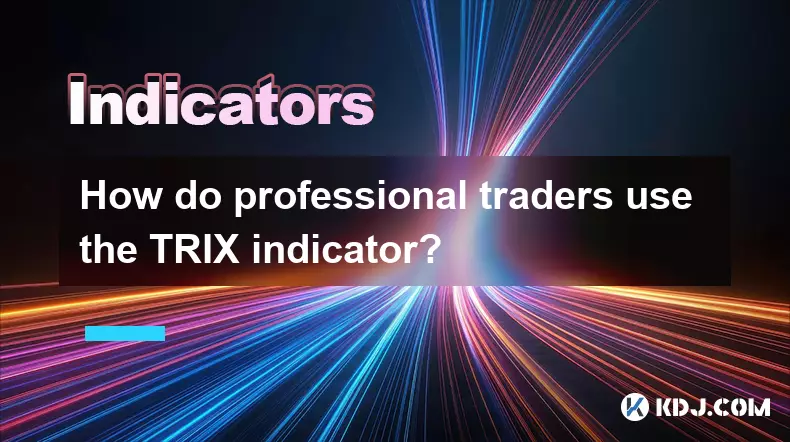
How do professional traders use the TRIX indicator?
Nov 06,2025 at 04:40pm
Understanding the TRIX Indicator in Crypto TradingThe TRIX (Triple Exponential Average) indicator is a momentum oscillator used by professional trader...
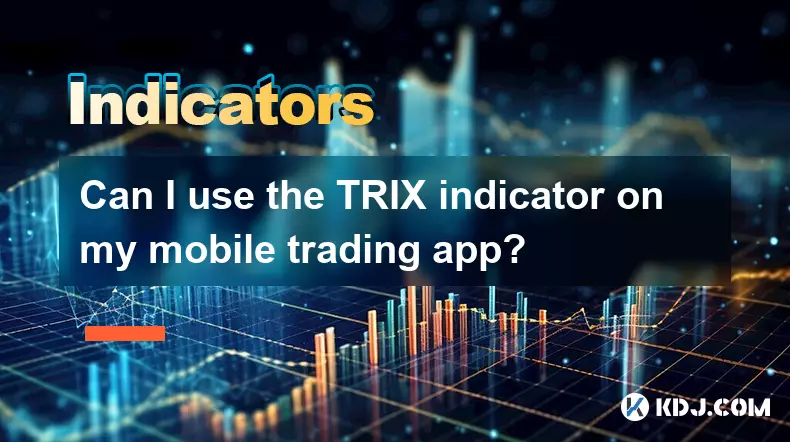
Can I use the TRIX indicator on my mobile trading app?
Nov 07,2025 at 07:40pm
The TRIX indicator, a momentum oscillator designed to filter out short-term fluctuations and highlight long-term trends, has become increasingly popul...
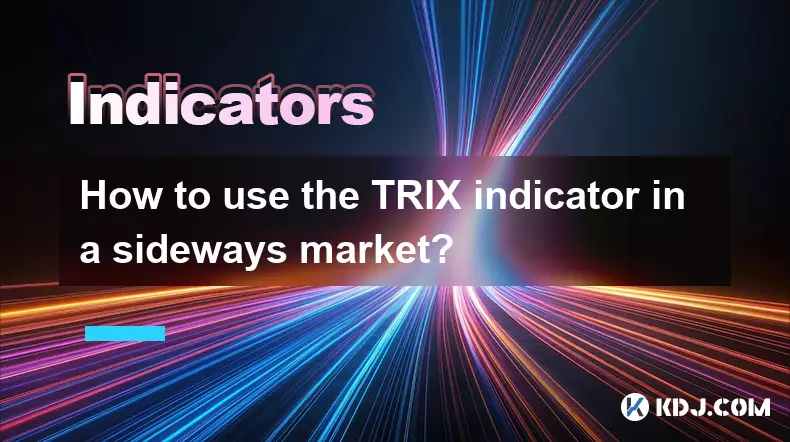
How to use the TRIX indicator in a sideways market?
Nov 10,2025 at 03:00pm
Bitcoin’s Role in Decentralized Finance Evolution1. Bitcoin remains the cornerstone of decentralized finance, serving as both a store of value and a b...

How does volume affect the signals from the TRIX indicator?
Nov 13,2025 at 07:39am
Understanding the TRIX Indicator in Cryptocurrency TradingThe TRIX (Triple Exponential Average) indicator is a momentum oscillator designed to filter ...
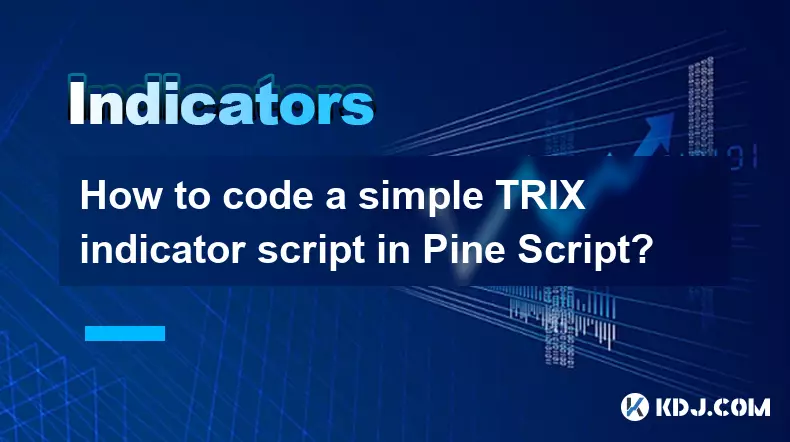
How to code a simple TRIX indicator script in Pine Script?
Nov 07,2025 at 06:20am
How to Code a Simple TRIX Indicator in Pine Script The TRIX (Triple Exponential Moving Average) indicator is widely used in cryptocurrency trading to ...

What's the best way to learn the TRIX indicator?
Nov 10,2025 at 12:39pm
Understanding the Basics of the TRIX Indicator1. The TRIX (Triple Exponential Average) indicator is a momentum oscillator designed to filter out short...

How do professional traders use the TRIX indicator?
Nov 06,2025 at 04:40pm
Understanding the TRIX Indicator in Crypto TradingThe TRIX (Triple Exponential Average) indicator is a momentum oscillator used by professional trader...

Can I use the TRIX indicator on my mobile trading app?
Nov 07,2025 at 07:40pm
The TRIX indicator, a momentum oscillator designed to filter out short-term fluctuations and highlight long-term trends, has become increasingly popul...

How to use the TRIX indicator in a sideways market?
Nov 10,2025 at 03:00pm
Bitcoin’s Role in Decentralized Finance Evolution1. Bitcoin remains the cornerstone of decentralized finance, serving as both a store of value and a b...

How does volume affect the signals from the TRIX indicator?
Nov 13,2025 at 07:39am
Understanding the TRIX Indicator in Cryptocurrency TradingThe TRIX (Triple Exponential Average) indicator is a momentum oscillator designed to filter ...

How to code a simple TRIX indicator script in Pine Script?
Nov 07,2025 at 06:20am
How to Code a Simple TRIX Indicator in Pine Script The TRIX (Triple Exponential Moving Average) indicator is widely used in cryptocurrency trading to ...
See all articles










































































